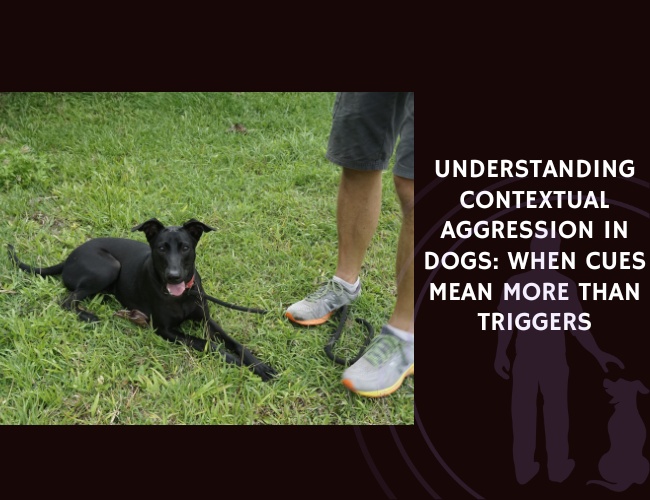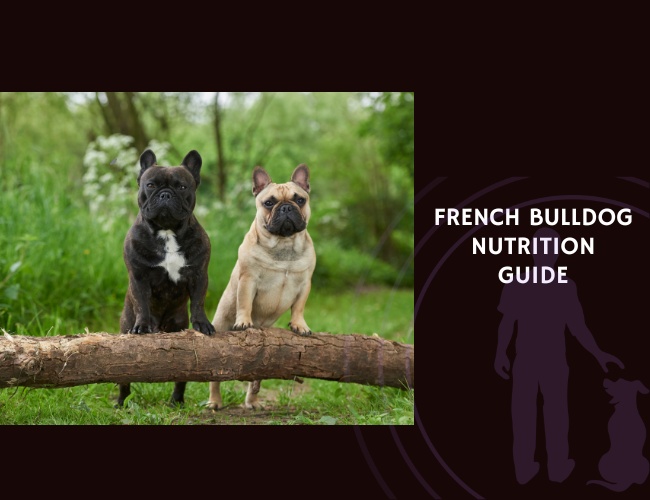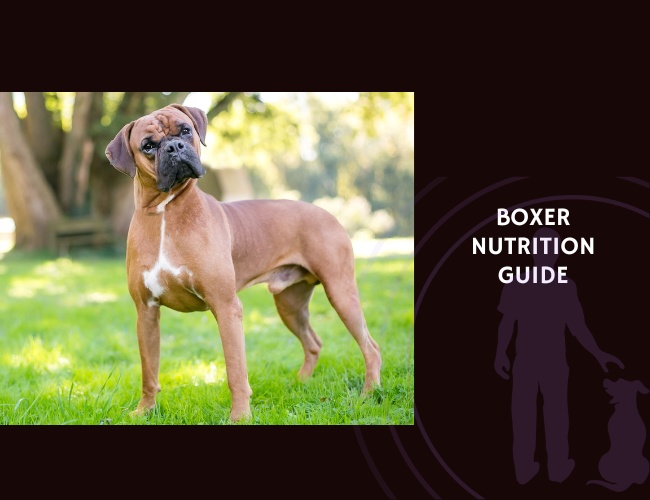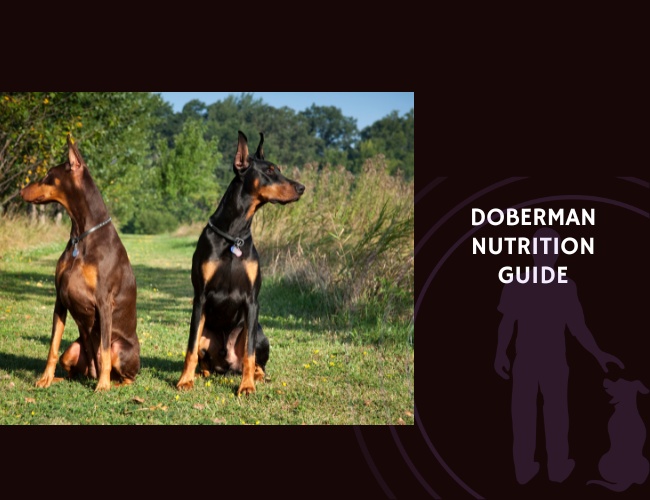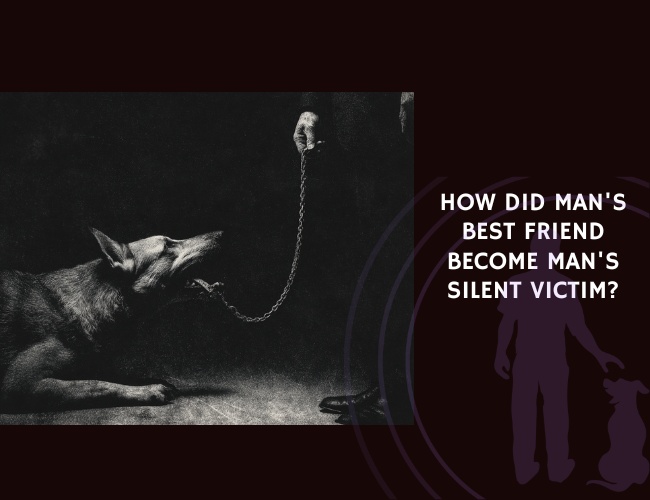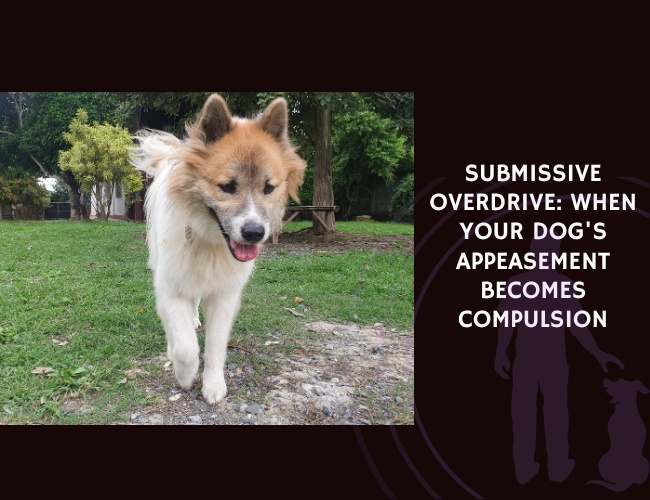Have you ever wondered why your seemingly gentle dog suddenly becomes aggressive in certain situations, even when there’s no obvious threat? Or perhaps you’ve noticed that your furry friend’s behavior changes dramatically based on seemingly minor environmental details? You’re not alone in this observation, and the answer lies in understanding a complex behavioral phenomenon called contextual aggression.
Unlike the simple trigger-response model that many dog owners are familiar with, contextual aggression reveals a sophisticated cognitive process where dogs integrate multiple environmental cues, past experiences, and learned associations to produce highly situational aggressive responses. This understanding represents a paradigm shift in how we approach canine behavior, moving us beyond the “what” of aggression to explore the deeper “why” and “how” of these complex behavioral patterns.
What is Contextual Aggression in Dogs?
Beyond Simple Triggers
Contextual aggression in dogs represents a sophisticated form of behavioral response that emerges from the complex interplay of environmental cues, learned associations, and internal states. Unlike reactive aggression, which manifests as an immediate, impulsive response to a perceived threat, contextual aggression develops through a nuanced process of predictive learning and memory integration.
When we observe contextual aggression, we’re witnessing your dog’s remarkable ability to process multiple streams of information simultaneously. Your furry friend isn’t simply reacting to a single trigger—they’re evaluating the entire situational context based on their accumulated experiences and learned expectations. This means that a dog might exhibit aggression only when specific combinations of factors align: perhaps only when on a leash, in a particular location, at a certain time of day, or in the presence of specific people.
The key distinction lies in the role of anticipation and memory. Dogs experiencing contextual aggression are essentially making predictions about future events based on current environmental cues. This predictive process draws from their rich repository of past experiences, creating a complex web of associations that can influence behavior in ways that might seem puzzling to their human companions.
The Role of Learning and Memory
Dogs possess remarkable cognitive abilities that allow them to form sophisticated associations between environmental cues and outcomes. Through classical conditioning, they learn to connect seemingly neutral stimuli with significant events. For example, the sight of a leash might predict a walk, which in turn might predict an encounter with an aggressive dog, leading to anticipatory aggression even before leaving the house.
This learning process involves what scientists call “cue-chaining,” where a series of environmental signals builds up to create expectation and emotional arousal. Your dog’s brain is constantly processing these chains of cues, making predictions about what’s likely to happen next based on past experiences. When these predictions involve potential threats or conflicts, the result can be contextual aggression that appears to emerge “out of nowhere” to untrained observers.
The hippocampus and amygdala—key brain regions responsible for memory formation and emotional processing—work together to create these complex associative networks. This neurological foundation explains why contextual aggression can be so persistent and why it often requires specialized approaches to modify effectively. 🧠
Understanding the Key Contextual Variables
Social Structure and Dynamics
The social context surrounding your dog plays a crucial role in shaping aggressive responses. Dogs are inherently social beings who constantly evaluate their relationships with other dogs, humans, and their position within various social hierarchies. These evaluations don’t occur in isolation—they’re deeply influenced by the specific social context in which interactions take place.
Your dog’s relationship with you as their primary caregiver significantly influences their behavioral responses in different contexts. A dog who feels secure and confident in their relationship with their owner might handle challenging situations differently than one who feels uncertain about their social position or support system. This relationship dynamic becomes particularly important in multi-dog households or when encountering unfamiliar dogs and people.
The presence of other dogs—whether familiar pack members or unknown individuals—creates another layer of social complexity. Your dog might exhibit completely different behavioral patterns when alone versus when in the company of other dogs. Some dogs become more confident and potentially more aggressive when supported by familiar pack members, while others might become more reactive when they feel responsible for protecting their social group.
Environmental factors such as leash restraint can dramatically alter social dynamics. A dog who is friendly and confident when off-leash might become reactive or aggressive when leashed, not because of the leash itself, but because of how leash restraint affects their ability to control social interactions and maintain comfortable distances from other dogs or people.
Environmental Signals and Spatial Context
The physical environment provides a rich tapestry of contextual cues that your dog processes continuously. Location-specific aggression is one of the most common forms of contextual aggression, where dogs exhibit aggressive behavior only in certain places or under specific environmental conditions.
Territorial considerations extend beyond simple property boundaries to include concepts of personal space and resource control. Your dog might be perfectly social in neutral locations but become aggressive when approached near their food bowl, favorite sleeping spot, or even in your car. These responses reflect learned associations between specific locations and the need to protect valuable resources or maintain control over important spaces.
Time-based patterns also play a significant role in contextual aggression. Some dogs exhibit aggressive behavior only during certain times of day, perhaps when they’re tired, hungry, or when household routines are disrupted. These temporal patterns often reflect internal state changes that make your dog more sensitive to environmental cues that might otherwise be ignored.
The disruption of familiar routines can serve as a powerful contextual trigger. Dogs thrive on predictability, and changes to their expected schedule or environment can create stress that makes them more prone to aggressive responses. This might explain why some dogs become more reactive during holidays, moves, or other periods of household disruption.
Internal States and Physiological Factors
Your dog’s internal physiological state creates a crucial context that influences how they interpret and respond to environmental cues. Pain, fatigue, hunger, hormonal changes, and overstimulation all affect your dog’s threshold for aggressive responses and their ability to process contextual information effectively.
Pain-related aggression often manifests as contextual aggression because dogs learn to associate specific movements, touches, or positions with discomfort. A dog with hip dysplasia might become aggressive when approached from behind, not because they’re inherently aggressive, but because they’ve learned that certain approaches often lead to painful contact. This creates a contextual pattern where aggression occurs only under specific circumstances related to their physical condition.
Stress hormones such as cortisol and norepinephrine can significantly influence your dog’s sensitivity to contextual cues. Elevated stress levels make dogs more reactive to environmental stimuli and can cause them to interpret neutral cues as potentially threatening. This explains why some dogs become more aggressive during periods of household stress, changes in routine, or when dealing with ongoing health issues.
Overstimulation represents another important internal state that affects contextual aggression. Dogs have limited capacity for processing environmental information, and when that capacity is exceeded, they may resort to aggressive responses as a way to create space and reduce stimulation. This often manifests as aggression in busy, chaotic environments where multiple contextual cues compete for attention.
How Dogs Interpret Cues Beyond Simple Triggers
Predictive Learning and Pattern Recognition
Dogs possess sophisticated cognitive abilities that allow them to identify patterns in their environment and make predictions about future events. This predictive learning process involves much more than simple cause-and-effect relationships—it encompasses complex pattern recognition that takes into account multiple variables and their interactions.
Through predictive learning, your dog develops what scientists call “internal models” of their environment. These models allow them to anticipate outcomes based on current contextual cues, even when those cues might seem irrelevant to human observers. For example, your dog might recognize that the combination of you putting on certain shoes, grabbing specific keys, and checking the weather app predicts a trip to the dog park—and if they’ve had negative experiences at the dog park, they might begin showing signs of stress or aggression even before leaving the house.
This predictive capacity extends to social situations as well. Dogs can learn to read subtle human body language cues and predict behavioral outcomes based on past experiences. A dog who has learned that certain human postures or facial expressions predict negative interactions might begin displaying aggressive behavior as a preemptive response to anticipated threats.
The remarkable aspect of canine predictive learning is its flexibility and context-sensitivity. Dogs can maintain multiple, context-specific prediction models simultaneously. Your dog might have one set of expectations for interactions with strangers in the park, another for encounters near your home, and still another for meetings that occur during leash walks. Each context activates different prediction models and associated behavioral responses.
Latent Inhibition and Stimulus Familiarization
Latent inhibition represents a crucial cognitive mechanism that influences how dogs develop contextual aggression. This phenomenon occurs when prior exposure to a stimulus without any negative consequences makes it harder for that stimulus to become associated with aggression later on. Understanding latent inhibition helps explain why early socialization is so important and why some dogs develop contextual aggression while others don’t.
Dogs with extensive positive or neutral exposure to various contextual cues are less likely to develop problematic associations with those cues. This protective effect of latent inhibition explains why well-socialized puppies often grow into more behaviorally flexible adults who can handle a wide range of environmental contexts without resorting to aggressive responses.
However, latent inhibition can also work against us in some situations. If a dog has extensive neutral exposure to a particular context, it can be more difficult to modify their behavior in that context later on. This might explain why some cases of contextual aggression are particularly resistant to traditional training approaches—the dog’s existing neutral associations with certain cues make it harder to establish new, positive associations.
The timing of exposure plays a crucial role in latent inhibition. Early exposure during critical developmental periods tends to have more lasting effects than exposure that occurs later in life. This underscores the importance of comprehensive socialization programs that expose young dogs to a wide variety of contextual cues in positive or neutral circumstances.
Generalization and Discrimination Processes
Dogs’ ability to generalize learned associations to similar situations while discriminating between different contexts represents a sophisticated cognitive process that directly influences contextual aggression. This balance between generalization and discrimination helps explain why some dogs develop very specific contextual triggers while others exhibit more broadly generalized aggressive responses.
Generalization allows dogs to apply learned associations to new but similar situations. A dog who has had negative experiences with men wearing hats might generalize this association to all men, all people wearing hats, or even all unfamiliar people depending on which aspects of the original context were most salient during the learning experience. This generalization process can make contextual aggression appear to spread or worsen over time.
Discrimination, on the other hand, allows dogs to distinguish between similar but distinct contexts and respond appropriately to each. Through discrimination training, dogs can learn to differentiate between contexts that require vigilance and those that are safe. This ability is crucial for successful behavior modification programs that aim to help dogs respond appropriately to different environmental contexts.
The balance between generalization and discrimination is influenced by several factors, including the dog’s stress level during initial learning experiences, the clarity of contextual cues, and the consistency of outcomes across different situations. Dogs who experience high stress during negative encounters are more likely to generalize broadly, while those who have clearer, more consistent contextual experiences are better able to discriminate between different situations.

The Neurological Foundations of Contextual Aggression
Brain Regions and Neural Networks
The neurological underpinnings of contextual aggression involve complex interactions between multiple brain regions, each contributing specific functions to the overall behavioral response. Understanding these neural mechanisms provides insight into why contextual aggression can be so persistent and why certain intervention strategies are more effective than others.
The hippocampus serves as the brain’s primary memory consolidation center, playing a crucial role in spatial and contextual memory formation. This region helps your dog encode and retrieve memories of where and when specific events occurred, creating the spatial and temporal context that influences aggressive responses. Damage to the hippocampus can disrupt contextual memory formation, leading to either increased or decreased contextual sensitivity depending on the nature of the damage.
The amygdala processes emotional information and threat detection, working closely with the hippocampus to create emotionally charged memories. When your dog encounters contextual cues associated with past threatening experiences, the amygdala activates stress response systems that prepare the body for defensive action. This activation can occur even when the current situation doesn’t actually pose a threat, explaining why contextual aggression can seem disproportionate to the apparent stimulus.
The prefrontal cortex, responsible for executive function and behavioral inhibition, helps regulate responses generated by the amygdala and hippocampus. Dogs with better prefrontal cortex function are more able to override automatic aggressive responses and make more flexible behavioral choices based on current circumstances rather than past experiences.
Neurotransmitter Systems and Hormonal Influences
The neurochemical basis of contextual aggression involves complex interactions between multiple neurotransmitter systems, each contributing to different aspects of the behavioral response. These chemical messengers influence everything from memory formation to emotional regulation and behavioral expression.
Dopamine plays a crucial role in reward prediction and learning, helping dogs form associations between contextual cues and outcomes. When predictions are accurate, dopamine reinforces the learned associations. However, when predictions are inaccurate—such as when a dog expects a threatening encounter but experiences a neutral or positive interaction—dopamine signaling can help update these associations and potentially reduce contextual aggression over time.
Serotonin influences mood regulation and behavioral inhibition, with lower serotonin levels associated with increased impulsivity and aggression. Dogs with compromised serotonin systems may be more likely to develop contextual aggression because they have difficulty inhibiting aggressive responses even when contextual cues suggest that aggression isn’t necessary.
Cortisol and other stress hormones create a physiological context that influences how dogs interpret and respond to environmental cues. Chronically elevated stress hormones can make dogs more reactive to contextual triggers and can interfere with their ability to learn new, more appropriate responses to familiar contexts. This creates a cycle where contextual aggression becomes self-reinforcing through its effects on stress physiology.
GABA, the brain’s primary inhibitory neurotransmitter, helps regulate arousal and anxiety levels. Dogs with compromised GABA function may be more prone to contextual aggression because they have difficulty maintaining calm states in challenging environments. This can make them more sensitive to contextual cues that might otherwise be ignored or tolerated.
The Dangers of Misdiagnosing Contextual Aggression
Mislabeling and Oversimplification
One of the most significant risks in addressing contextual aggression lies in the tendency to oversimplify complex behavioral patterns. When we fail to recognize the sophisticated cognitive processes underlying contextual aggression, we risk mislabeling learned situational patterns as inherent personality traits or genetic predispositions.
This mislabeling can have profound consequences for both dog and owner. When contextual aggression is attributed to “dominance,” “stubbornness,” or “bad breeding,” the focus shifts away from understanding and modifying the environmental and relational factors that actually drive the behavior. This misattribution can lead to inappropriate training methods that not only fail to address the underlying issues but may actually worsen the problem by adding additional stress and negative associations to already challenging contexts.
The complexity of contextual aggression means that surface-level observations can be misleading. A dog who appears to be “randomly” aggressive might actually be responding to subtle environmental cues that aren’t immediately apparent to human observers. Without careful behavioral analysis and consideration of contextual factors, these patterns remain hidden, leading to frustration and potentially dangerous mismanagement of the situation.
Furthermore, mislabeling contextual aggression as a personality trait can become a self-fulfilling prophecy. When owners expect their dog to be aggressive in certain situations, their own behavior and emotional state can inadvertently reinforce the very patterns they’re trying to eliminate. This creates a cycle where human expectations and dog behavior become intertwined in ways that perpetuate the problem.
Inappropriate Training Approaches
The misdiagnosis of contextual aggression often leads to the implementation of inappropriate training strategies that can exacerbate the problem rather than resolve it. When aggression appears “random” or unpredictable, trainers and owners may resort to suppression-based techniques that fail to address the underlying contextual factors driving the behavior.
Overuse of aversive methods represents a particularly problematic response to contextual aggression. Punishment-based approaches may temporarily suppress aggressive displays, but they don’t address the underlying contextual associations that drive the behavior. In fact, adding aversive consequences to already challenging contexts can create additional negative associations and increase the dog’s overall stress level, potentially making them more sensitive to contextual triggers rather than less.
The timing and context of training interventions are crucial factors that are often overlooked when contextual aggression is misdiagnosed. Generic training approaches that don’t account for the specific contextual variables influencing the dog’s behavior are unlikely to be effective. A dog who exhibits aggression only in specific environmental contexts needs training that addresses those specific contexts, not general obedience training that occurs in neutral environments.
Counter-productive training can also occur when interventions focus on suppressing the aggressive behavior rather than changing the underlying emotional and cognitive processes. Teaching a dog to “stay” or “sit” when they’re experiencing contextual stress doesn’t address the root cause of their aggressive response and may actually increase their frustration and anxiety by preventing them from using their natural coping mechanisms.
Escalation and Relationship Damage
Perhaps the most serious consequence of misdiagnosing contextual aggression is the potential for escalation and damage to the human-animal relationship. When training approaches are based on misunderstanding of the underlying behavioral mechanisms, they can inadvertently increase the dog’s stress level and defensive responses.
Inconsistent or inappropriate human responses to contextual aggression can create additional learning opportunities that reinforce problematic behavior patterns. If a dog learns that aggressive displays in certain contexts result in the removal of perceived threats or the cessation of uncomfortable situations, the contextual aggression becomes functionally reinforced and is likely to persist or intensify over time.
The erosion of trust between dog and owner represents another significant risk associated with misdiagnosis. When owners don’t understand the contextual factors driving their dog’s aggressive responses, they may begin to view their pet as unpredictable or dangerous. This perception can lead to changes in the owner’s behavior—increased vigilance, restriction of activities, or emotional distance—that actually contribute to the dog’s stress and potentially worsen the contextual aggression.
Additionally, misdiagnosis can lead to premature decisions about rehoming or euthanasia. Dogs with contextual aggression are often labeled as “aggressive” without recognition that their behavior is highly situation-specific and potentially modifiable through appropriate intervention. This tragic outcome could be prevented through better understanding of contextual factors and implementation of appropriate behavior modification strategies. 🐾

Recognizing Contextual Patterns in Your Dog
Environmental Audit and Pattern Recognition
Developing the ability to recognize contextual patterns in your dog’s behavior requires systematic observation and a shift in perspective from focusing on individual incidents to identifying broader environmental and situational themes. This process begins with conducting a comprehensive environmental audit that examines the various contexts in which your dog’s behavior occurs.
Start by maintaining a detailed behavior log that records not just when aggressive incidents occur, but all the contextual variables present during those incidents. Include information about location, time of day, weather conditions, other people or animals present, your dog’s physical state, recent activities, and any changes to routine or environment. This systematic approach to data collection often reveals patterns that aren’t immediately obvious during isolated incidents.
Pay particular attention to the sequence of events leading up to aggressive displays. Contextual aggression often involves chains of environmental cues that build up over time rather than single triggering events. Your dog might begin showing subtle signs of stress or arousal minutes or even hours before the actual aggressive incident, and these early warning signs are often contextually specific.
Consider creating a detailed map of your dog’s behavioral responses across different environments. Note how their behavior changes in different locations, with different people, and under different circumstances. This environmental mapping exercise can help identify the specific contextual variables that influence your dog’s behavior and guide the development of targeted intervention strategies.
Subtle Cue Recognition
Dogs are remarkably skilled at reading subtle environmental cues that humans often miss entirely. Learning to recognize these subtle cues can provide valuable insight into your dog’s contextual triggers and help you understand their behavioral responses more effectively.
Body language changes often precede aggressive displays by several minutes or even longer. Learn to recognize your dog’s early warning signs: changes in posture, ear position, tail carriage, breathing patterns, or facial expressions. These subtle changes often occur in response to contextual cues and can provide advance warning of potential aggressive responses.
Pay attention to your dog’s attention and arousal patterns in different contexts. Does your dog become hypervigilant in certain locations? Do they show increased scanning behavior or fixation on specific environmental features? These attention patterns can reveal contextual sensitivities that might not be apparent from observing their behavior alone.
Consider how your own behavior and emotional state might serve as contextual cues for your dog. Dogs are remarkably attuned to human emotional states and can pick up on subtle changes in our behavior that we might not even be aware of. Your tension, anxiety, or anticipation of problems can become part of the contextual pattern that influences your dog’s behavior.
Timing and Sequence Analysis
Understanding the temporal aspects of contextual aggression is crucial for effective pattern recognition. Aggressive responses don’t occur in isolation—they’re part of behavioral sequences that unfold over time and are influenced by the timing and sequence of environmental events.
Examine the timing patterns in your dog’s aggressive responses. Are there certain times of day when aggression is more likely? Do aggressive incidents cluster around specific events or activities? Understanding these temporal patterns can provide insight into the internal and external factors that contribute to contextual aggression.
Consider the concept of “trigger stacking,” where multiple contextual stressors accumulate over time to create a situation where your dog’s tolerance threshold is exceeded. A dog might handle individual stressors without difficulty, but when multiple contextual challenges occur in sequence, they may resort to aggressive responses as a coping mechanism.
Pay attention to recovery periods between stressful events. Dogs need time to return to baseline arousal levels after experiencing stress, and insufficient recovery time can make them more sensitive to contextual triggers. This might explain why some dogs seem to have “good days” and “bad days” depending on the accumulation of contextual stressors over time.
Developing Context-Aware Management Strategies
Environmental Modification Approaches
The most effective approach to managing contextual aggression often involves systematic modification of the environmental factors that contribute to the behavioral response. This process requires a thorough understanding of the specific contextual variables that influence your dog’s behavior and creative problem-solving to address those variables.
Begin by identifying the modifiable aspects of your dog’s environment that contribute to contextual aggression. This might include changes to physical spaces, alterations to daily routines, or modifications to social interactions. The goal is to reduce the environmental pressure that contributes to aggressive responses while maintaining your dog’s quality of life and normal activities.
Consider implementing environmental management strategies that reduce your dog’s exposure to problematic contextual cues while you work on behavior modification. This might involve using different walking routes, avoiding certain times of day for activities, or creating physical barriers that help your dog feel more secure in challenging environments. These management strategies aren’t permanent solutions, but they can provide breathing room for implementing more comprehensive behavior modification programs.
Physical environmental modifications can be particularly effective for addressing location-specific contextual aggression. Changes to lighting, furniture arrangement, or the introduction of visual barriers can significantly alter your dog’s perception of and response to specific locations. Sometimes simple modifications like moving a dog’s food bowl or changing the layout of a room can eliminate contextual triggers that contribute to aggressive responses.
Predictive Training Protocols
Developing training protocols that address the predictive nature of contextual aggression represents a sophisticated approach that acknowledges the cognitive complexity of the behavior. These protocols focus on changing your dog’s predictions about environmental contexts rather than simply suppressing aggressive responses.
Counter-conditioning techniques can be particularly effective for modifying contextual aggression. The goal is to change your dog’s emotional response to specific contextual cues by pairing those cues with positive experiences. This process requires careful planning to ensure that the positive associations are strong enough to override existing negative associations and that the training contexts closely match the real-world situations where aggression occurs.
Desensitization protocols should be implemented gradually and systematically, starting with very mild versions of the contextual cues and slowly increasing intensity as your dog’s comfort level improves. This process requires patience and consistency, as rushing the desensitization process can actually strengthen the negative associations you’re trying to eliminate.
Consider implementing “choice-based” training approaches that give your dog more control over their interactions with challenging contextual cues. Teaching your dog that they can choose to approach or avoid certain situations can reduce their anxiety and defensive responses. This approach acknowledges that some degree of environmental control is a natural and healthy coping mechanism for dogs.
Relationship-Focused Interventions
The quality of the relationship between you and your dog plays a crucial role in contextual aggression, and relationship-focused interventions can be among the most effective approaches for addressing the behavior. These interventions focus on building trust, communication, and mutual understanding rather than simply controlling behavior.
Developing clear, consistent communication patterns helps your dog understand what to expect in different contexts. This might involve teaching specific cues that signal different types of activities or interactions, helping your dog predict and prepare for various environmental contexts. Clear communication reduces uncertainty and can significantly decrease the anxiety that contributes to contextual aggression.
Building your dog’s confidence through positive training experiences can help them handle challenging contexts more effectively. Dogs who feel secure in their relationship with their owners are more likely to look to their humans for guidance in uncertain situations rather than resorting to defensive aggression. This confidence-building process should occur in a variety of contexts to ensure generalization.
Consider implementing “trust-building” exercises that specifically address the contexts where aggression occurs. These exercises should be designed to create positive associations with your presence and guidance in challenging situations. The goal is to help your dog learn that you’re a reliable source of safety and support rather than an additional source of stress or unpredictability.
Cues. Context. Conflict.
Aggression isn’t random—it’s rooted in learned patterns.
When dogs display seemingly sudden aggression, it’s often the result of carefully constructed associations between subtle environmental cues and past experiences. This learned context, not a single trigger, is the hidden script behind their behaviour.
Context shapes perception—and perception shapes response.
Dogs process layers of sensory, spatial, and social information to predict outcomes. A leash, a specific location, or a person’s posture may activate an internal model built on memory, fear, or expectation, driving aggression before danger is even present.
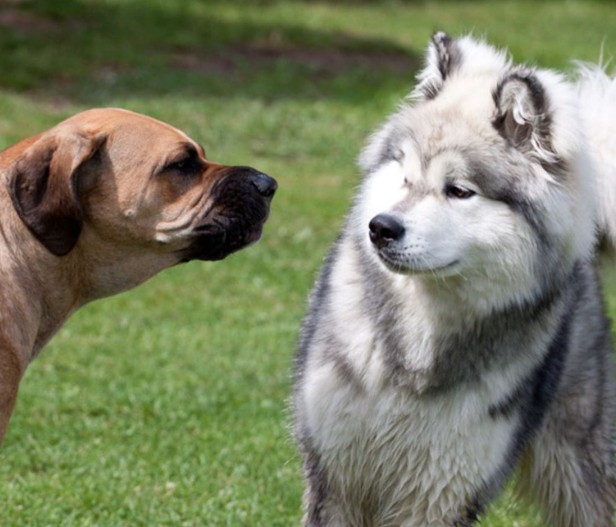
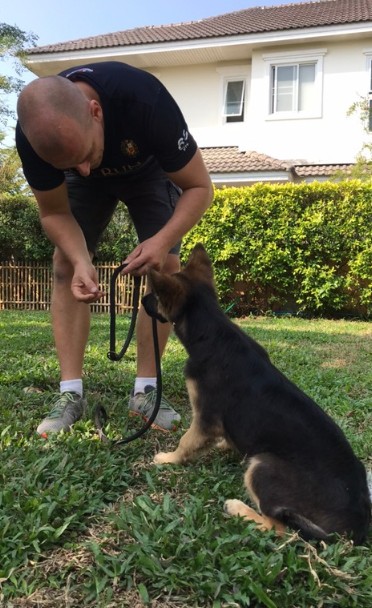
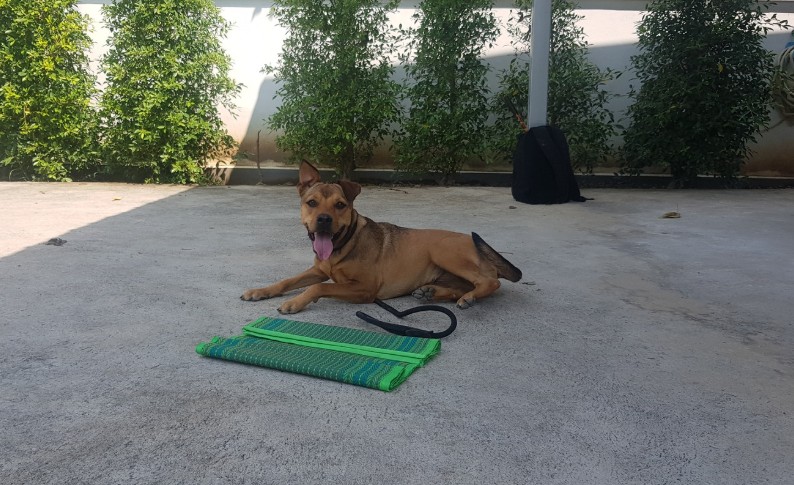
Misunderstanding the why leads to mistreating the what.
Without grasping the contextual roots of aggression, humans risk using suppression-based training that only masks symptoms. True change begins when we decode the deeper structure of canine cognition and rebuild trust where fear once ruled.
Prevention Strategies for Contextual Aggression
Early Socialization and Exposure
Preventing contextual aggression is significantly more effective than attempting to modify it after it has developed. Early socialization and carefully planned exposure to various environmental contexts during critical developmental periods can help prevent the formation of problematic associations that lead to contextual aggression.
Comprehensive socialization should include exposure to a wide variety of environmental contexts, not just different people and animals. This includes different locations, surfaces, sounds, smells, and situations that your dog might encounter throughout their life. The goal is to create a broad base of positive or neutral associations with various contextual cues.
The timing and quality of socialization experiences are crucial factors in preventing contextual aggression. Exposures should occur during the critical socialization period (roughly 3-14 weeks of age) when puppies are most receptive to forming positive associations with novel stimuli. However, socialization should continue throughout the dog’s first year of life to reinforce and expand these early associations.
Pay particular attention to contexts that commonly trigger aggression in adult dogs: handling and grooming, veterinary care, resource guarding situations, and interactions with strangers or unfamiliar dogs. Creating positive associations with these contexts early in life can prevent the development of contextual aggression later on.
Stress Management and Resilience Building
Building your dog’s resilience and stress management abilities can help prevent contextual aggression by improving their ability to handle challenging situations without resorting to defensive responses. This involves both physical and mental conditioning that enhances your dog’s overall stress tolerance.
Regular exercise and mental stimulation help maintain optimal stress hormone levels and improve your dog’s ability to cope with environmental challenges. Dogs who are physically and mentally tired are often more relaxed and less reactive to contextual triggers. However, exercise programs should be tailored to your dog’s individual needs and capabilities.
Teaching your dog relaxation and self-soothing techniques can provide them with alternative coping mechanisms for handling stressful contexts. This might include teaching them to settle on a mat, practice deep breathing exercises, or engage in calming activities like sniffing or gentle chewing. These techniques give your dog alternatives to aggressive responses when faced with challenging situations.
Consider implementing “stress inoculation” training that gradually exposes your dog to mild stressors in controlled environments. This approach helps build resilience by teaching your dog that they can successfully handle challenging situations. The key is to ensure that the stressors are mild enough that your dog can cope successfully, building confidence rather than overwhelming their coping abilities.
Routine and Predictability
Establishing consistent routines and predictable environmental patterns can significantly reduce the likelihood of contextual aggression by minimizing uncertainty and stress in your dog’s daily life. Dogs thrive on predictability, and consistent routines help them feel secure and confident in their environment.
Develop consistent daily routines that include regular feeding times, exercise periods, and social interactions. This predictability helps your dog know what to expect and reduces the anxiety that can contribute to contextual aggression. When dogs can predict their daily activities, they’re less likely to feel the need to control their environment through aggressive responses.
Create predictable patterns for potentially challenging activities like grooming, veterinary visits, or car rides. Establishing consistent pre-activity routines helps your dog prepare mentally and emotionally for these experiences. This preparation can significantly reduce the stress associated with these activities and prevent the development of contextual aggression.
Consider implementing “safety signals” that let your dog know when they’re in secure, non-threatening contexts. This might include specific locations, objects, or activities that consistently predict positive or neutral experiences. These safety signals help your dog distinguish between contexts that require vigilance and those where they can relax and feel secure. 🧡
Treatment Approaches for Established Contextual Aggression
Behavior Modification Techniques
When contextual aggression has already developed, systematic behavior modification represents the most effective approach for addressing the underlying causes of the behavior. These techniques focus on changing the emotional and cognitive responses that drive aggressive behavior rather than simply suppressing the outward expression of aggression.
Systematic desensitization combined with counter-conditioning forms the foundation of most effective behavior modification programs. This approach involves gradually exposing your dog to the contextual cues that trigger aggression while simultaneously pairing those cues with positive experiences. The goal is to change your dog’s emotional response to specific contexts from fear or anxiety to calm confidence or positive anticipation.
The implementation of desensitization protocols requires careful planning and execution. Begin with very mild versions of the contextual triggers—perhaps at greater distances, lower intensities, or shorter durations than those that typically provoke aggression. Gradually increase the intensity of the contextual cues as your dog demonstrates comfort and relaxation at each level.
Counter-conditioning should involve high-value rewards that are meaningful to your individual dog. This might include special treats, favorite toys, or enjoyable activities that create positive associations with previously challenging contexts. The timing of these rewards is crucial—they should be presented at the first sign of the contextual cue, before your dog has a chance to become anxious or aggressive.
Consider implementing “choice-based” protocols that give your dog some control over their interactions with challenging contexts. Teaching your dog that they can choose to approach or move away from certain situations can reduce their defensive responses and build confidence. This approach acknowledges that some degree of environmental control is a natural and healthy coping mechanism.
Medication and Supplementation
In some cases, contextual aggression may be severe enough to warrant pharmaceutical intervention alongside behavior modification. Medications and supplements can help reduce anxiety, improve learning capacity, and create the emotional stability necessary for successful behavior modification.
Anti-anxiety medications can be particularly helpful for dogs whose contextual aggression is driven by high levels of anxiety or fear. These medications work by altering neurotransmitter levels in the brain, making it easier for dogs to remain calm in challenging contexts and improving their ability to learn new, more appropriate responses to environmental cues.
The decision to use medication should always be made in consultation with a veterinary behaviorist or veterinarian experienced in behavior modification. Medications are most effective when used as part of a comprehensive treatment program that includes behavior modification and environmental management strategies.
Supplements such as L-theanine, melatonin, or omega-3 fatty acids may provide additional support for dogs with contextual aggression. While these supplements are generally considered safe, they should still be used under veterinary guidance to ensure appropriate dosing and to monitor for any potential interactions with other medications or health conditions.

Professional Support and Guidance
Addressing established contextual aggression often requires professional expertise to ensure safe and effective treatment. The complexity of contextual aggression means that well-intentioned but inexperienced interventions can sometimes worsen the problem or create additional behavioral issues.
Certified dog behavior consultants or veterinary behaviorists can provide specialized expertise in designing and implementing behavior modification programs. These professionals have the training and experience necessary to identify the specific contextual factors contributing to your dog’s aggression and develop targeted intervention strategies.
Professional support is particularly important when contextual aggression involves potential safety risks to humans or other animals. Experienced professionals can help you implement safety protocols while working on behavior modification, ensuring that treatment proceeds safely and effectively.
Consider seeking professional guidance even if you feel confident in your ability to address the behavior independently. Many subtle aspects of contextual aggression require experienced eyes to identify and address effectively. Professional support can help you avoid common pitfalls and ensure that your efforts are focused on the most effective interventions.
Building Long-term Success
Maintenance and Generalization
Successfully addressing contextual aggression requires ongoing attention to maintenance and generalization of improved responses. Even after your dog has learned to respond appropriately in specific contexts, continued practice and reinforcement are necessary to maintain these improvements and ensure they generalize to new situations.
Regular practice sessions in various contexts help maintain your dog’s improved responses and prevent regression. These sessions should include periodic exposure to the contextual cues that previously triggered aggression, with continued reinforcement of calm, appropriate responses. The frequency and intensity of these practice sessions can be gradually reduced as your dog’s responses become more reliable.
Generalization training involves systematically exposing your dog to variations of the contexts where they’ve learned appropriate responses. This might include different locations, times of day, or combinations of contextual cues. The goal is to ensure that your dog’s improved responses transfer to all relevant real-world situations, not just the specific contexts used during training.
Monitor your dog’s responses to contextual cues over time and be prepared to implement “booster” training sessions if you notice any regression. Contextual aggression can sometimes resurface during periods of stress, illness, or major life changes, and having a plan for addressing these setbacks can help maintain long-term success.
Lifestyle Integration
The ultimate goal of treating contextual aggression is to integrate improved responses into your dog’s daily life in a way that feels natural and sustainable for both you and your dog. This integration process requires ongoing attention to environmental management and relationship maintenance.
Develop sustainable daily routines that support your dog’s improved responses while maintaining a high quality of life. This might involve continued environmental modifications, ongoing training activities, or lifestyle adjustments that reduce exposure to problematic contextual cues. The key is to find approaches that feel manageable and enjoyable rather than burdensome.
Consider how your dog’s improved responses to contextual cues can enhance their overall quality of life. Dogs who feel confident and secure in various contexts are often more relaxed, more social, and more enjoyable companions. This improvement in overall well-being can strengthen the human-animal bond and make continued maintenance efforts feel worthwhile.
Celebrate your dog’s progress and acknowledge the effort you’ve both invested in addressing contextual aggression. Small improvements in your dog’s ability to handle challenging contexts represent significant achievements that deserve recognition and continued support.
Ongoing Monitoring and Adjustment
Successful long-term management of contextual aggression requires vigilant monitoring of your dog’s responses and willingness to adjust strategies as circumstances change. Dogs’ needs and sensitivities can evolve over time due to aging, health changes, or new life experiences.
Establish regular assessment periods where you evaluate your dog’s current responses to various contextual cues. This might involve periodic “test” exposures to previously challenging contexts or systematic observation of your dog’s behavior patterns over time. These assessments help you identify areas where additional support might be needed and celebrate continued progress.
Be prepared to modify your approach as your dog ages or as their life circumstances change. Senior dogs may develop new sensitivities or lose some of their resilience to contextual stressors. Similarly, major life changes such as moving, new family members, or changes in routine may require temporary adjustments to your management strategies.
Maintain connections with professional support resources even after initial treatment goals have been achieved. Having access to expert guidance during challenging periods can help you address minor setbacks before they develop into major problems. This ongoing professional relationship provides peace of mind and ensures continued success in managing contextual aggression.
Understanding Individual Differences and Breed Considerations
Genetic and Breed-Specific Factors
While contextual aggression can occur in any dog, certain breeds and genetic lines may be more predisposed to developing these behavioral patterns due to their evolutionary history and selective breeding. Understanding these predispositions can help inform prevention and treatment strategies.
Herding breeds, for example, may be more sensitive to movement-based contextual cues due to their genetic programming to respond to and control movement. This heightened sensitivity can sometimes manifest as contextual aggression in situations involving rapid movement, multiple moving stimuli, or situations where the dog feels responsible for controlling group dynamics.
Guardian breeds may show increased sensitivity to territorial and protective contexts, potentially developing contextual aggression related to property boundaries, resource protection, or family member safety. Understanding these breed-specific tendencies helps owners recognize potential risk factors and implement appropriate prevention strategies.
Terrier breeds, originally bred for independent hunting and pest control, may be more prone to developing contextual aggression related to prey drive or territorial disputes. Their genetic programming for quick, decisive action can sometimes manifest as rapid escalation in challenging contexts.
However, it’s crucial to remember that breed tendencies are general patterns, not individual predictions. Many dogs from supposedly “aggressive” breeds never develop contextual aggression, while dogs from typically gentle breeds can develop severe behavioral issues. Individual temperament, socialization experiences, and environmental factors play much larger roles than breed in determining behavioral outcomes.
Age-Related Considerations
The development and expression of contextual aggression can vary significantly depending on your dog’s age and developmental stage. Understanding these age-related factors helps inform appropriate prevention and intervention strategies.
Puppy and adolescent dogs may show contextual sensitivity that appears to develop suddenly during critical developmental periods. Fear periods, adolescent hormonal changes, and ongoing brain development can all influence how dogs interpret and respond to environmental contexts. What appears to be sudden onset contextual aggression may actually reflect normal developmental changes in how young dogs process environmental information.
Adult dogs who develop contextual aggression may be responding to accumulated life experiences, health changes, or alterations in their social or physical environment. The development of contextual aggression in adult dogs often reflects more complex learning histories and may require more intensive intervention strategies.
Senior dogs may develop new contextual sensitivities due to cognitive decline, sensory impairments, or increased vulnerability to stress. Age-related changes in brain function can affect how dogs process contextual information and may require modifications to established management strategies. Additionally, pain or other health issues common in senior dogs can create new contextual triggers that weren’t present in younger years.
Understanding your dog’s developmental stage and age-related needs helps you implement appropriate prevention strategies and adjust treatment approaches to match their current capabilities and limitations.
The Role of Human Behavior in Contextual Aggression
Owner Stress and Emotional Contagion
The emotional state and behavior of dog owners play a crucial role in the development and maintenance of contextual aggression. Dogs are remarkably attuned to human emotional states and can easily pick up on subtle cues that indicate anxiety, tension, or anticipation of problems.
When owners become anxious or tense in certain contexts, they inadvertently communicate this stress to their dogs through changes in body language, vocal tone, and behavior patterns. This emotional contagion can create or reinforce contextual triggers, as dogs learn to associate their owner’s stress with potentially threatening situations.
The concept of “tension traveling down the leash” reflects this phenomenon in practical terms. When owners anticipate problems during walks or other activities, their physical tension and behavioral changes can actually increase the likelihood that their dog will respond aggressively in those contexts. This creates a self-fulfilling prophecy where owner expectations contribute to the very behaviors they’re trying to prevent.
Learning to recognize and manage your own emotional responses to challenging contexts is often a crucial component of successful behavior modification programs. This might involve relaxation techniques, mindfulness practices, or cognitive strategies that help you remain calm and confident even when your dog is struggling with contextual challenges.
Communication Patterns and Consistency
The way owners communicate with their dogs in different contexts can significantly influence the development and expression of contextual aggression. Inconsistent communication patterns or unclear signals can increase anxiety and defensive responses in challenging situations.
Clear, consistent communication helps dogs understand what’s expected of them in different contexts and reduces the uncertainty that can contribute to aggressive responses. This involves developing reliable cues and signals that help your dog navigate various environmental contexts successfully.
Pay attention to how your communication style might change in different contexts. Many owners unconsciously alter their voice tone, body language, or interaction patterns when they’re concerned about potential behavioral problems. These changes can actually signal to your dog that the current context is problematic, potentially triggering the very responses owners are trying to prevent.
Consider implementing context-specific communication strategies that help your dog understand and respond appropriately to different environmental situations. This might include teaching specific cues that signal different types of activities or interactions, helping your dog predict and prepare for various environmental contexts.
Training Philosophy and Approach
The training philosophy and methods used by owners can significantly influence both the development and treatment of contextual aggression. Punishment-based approaches or inconsistent training methods can actually contribute to the development of contextual behavioral problems.
Positive reinforcement-based training approaches tend to be more effective for addressing contextual aggression because they build confidence and create positive associations with training and interaction. These methods help dogs learn that good things happen when they respond appropriately to environmental challenges, rather than simply learning to avoid punishment.
The timing and consistency of training efforts are crucial factors in addressing contextual aggression. Sporadic or poorly timed training sessions may be ineffective or even counterproductive, while consistent, well-planned training programs can produce significant improvements in contextual responses.
Consider how your training approach might need to be modified for different contexts. What works in your quiet living room might not be effective in a busy park or during stressful situations. Developing context-specific training strategies helps ensure that your dog can generalize appropriate responses across various environmental situations.
Technology and Modern Approaches
Video Analysis and Pattern Recognition
Modern technology offers new tools for understanding and addressing contextual aggression through detailed behavioral analysis. Video recording and analysis can reveal subtle patterns and triggers that might be missed during real-time observation.
Recording your dog’s behavior in various contexts allows for detailed analysis of behavioral sequences, environmental factors, and subtle cues that contribute to aggressive responses. This objective documentation can be invaluable for identifying patterns and measuring progress over time.
Slow-motion video analysis can reveal micro-expressions and subtle body language changes that occur before aggressive displays. These early warning signs can provide valuable information for prevention and intervention strategies.
Consider using multiple camera angles or longer recording sessions to capture the full context of behavioral incidents. Sometimes the most relevant contextual factors occur minutes or even hours before the actual aggressive display, and extended recording can help identify these contributing factors.
Environmental Monitoring and Data Collection
Wearable technology and environmental sensors can provide objective data about the contexts in which behavioral problems occur. Heart rate monitors, activity trackers, and environmental sensors can help identify physiological and environmental patterns associated with contextual aggression.
Physiological monitoring can reveal stress responses that occur before visible behavioral changes, providing early warning of developing problems. This information can be particularly valuable for identifying subtle contextual triggers that might not be apparent through behavioral observation alone.
Environmental monitoring systems can track factors like noise levels, temperature, air quality, and activity patterns that might contribute to contextual aggression. This objective data can help identify environmental factors that consistently correlate with behavioral problems.
Consider keeping digital logs that combine behavioral observations with environmental data and physiological measurements. This comprehensive approach to data collection can reveal complex patterns and relationships that inform more effective intervention strategies.
Future Directions and Research
Emerging Understanding
Our understanding of contextual aggression continues to evolve as new research reveals the sophisticated cognitive processes underlying these behaviors. Emerging research in canine cognition, neuroscience, and behavior is providing new insights into the mechanisms that drive contextual aggression.
Recent studies in canine cognition suggest that dogs possess more sophisticated predictive abilities than previously recognized. This research is helping us understand how dogs integrate multiple streams of contextual information to make predictions about their environment and adjust their behavior accordingly.
Advances in neuroscience are revealing the complex brain networks involved in contextual learning and memory formation. This research is informing the development of more targeted intervention strategies that address the neurological foundations of contextual aggression.
Genetic research is beginning to identify specific genes and genetic variations that influence behavioral traits related to aggression, anxiety, and stress resilience. This information may eventually lead to more personalized approaches to prevention and treatment based on individual genetic profiles.
Innovative Treatment Approaches
New treatment approaches are being developed that incorporate insights from cutting-edge research in animal behavior, neuroscience, and cognitive psychology. These innovative methods offer hope for more effective and efficient treatment of contextual aggression.
Virtual reality and simulation technologies are being explored as tools for controlled exposure therapy that allows precise manipulation of contextual variables. These technologies could eventually allow for highly controlled desensitization protocols that would be difficult or impossible to implement in real-world environments.
Pharmacological research is developing new medications and supplements that specifically target the neurological mechanisms underlying contextual learning and memory formation. These developments may lead to more effective pharmaceutical supports for behavior modification programs.
Biofeedback and neurofeedback technologies are being adapted for use with dogs, potentially offering new ways to help dogs learn to regulate their own stress responses and emotional states in challenging contexts.
Conclusion: A New Paradigm for Understanding Canine Behavior
Understanding contextual aggression represents a fundamental shift in how we think about canine behavior and aggression. Moving beyond simple trigger-response models to embrace the complexity of contextual learning and predictive behavior opens new possibilities for prevention, intervention, and successful management of these challenging behavioral patterns.
The journey from recognizing contextual aggression to successfully managing it requires patience, consistency, and a willingness to see the world from your dog’s perspective. Your furry friend isn’t being “difficult” or “dominant”—they’re responding to their environment based on sophisticated cognitive processes that integrate past experiences, current context, and future predictions.
This understanding emphasizes the importance of the human-animal relationship in both the development and resolution of contextual aggression. As we’ve explored throughout this article, your role extends far beyond simple training commands to encompass environmental management, emotional support, clear communication, and collaborative problem-solving with your canine companion.
The techniques and strategies outlined in this guide represent evidence-based approaches that acknowledge the cognitive complexity underlying contextual aggression while providing practical tools for addressing these behaviors in real-world settings. Remember that every dog is unique, and successful intervention requires individualized approaches that consider your dog’s specific history, temperament, and environmental context.
Looking Forward
As our understanding of canine cognition continues to evolve, we can expect even more sophisticated and effective approaches to preventing and treating contextual aggression. The integration of technology, advances in neuroscience, and continued research in animal behavior promise to provide new tools and insights that will benefit both dogs and their human companions.
Most importantly, this new understanding of contextual aggression reinforces the fundamental truth that dogs are intelligent, emotional beings capable of complex learning and adaptation. When we approach behavioral challenges with respect for this cognitive complexity and commitment to understanding rather than simply controlling behavior, we create opportunities for genuine resolution and strengthened relationships.
Your investment in understanding and addressing contextual aggression represents more than just solving a behavioral problem—it’s an investment in your dog’s well-being, your relationship, and your shared future together. With patience, consistency, and the right support, even the most challenging cases of contextual aggression can be successfully managed, allowing both you and your dog to enjoy a fuller, more confident life together.
The path forward may require time and effort, but the rewards—a deeper understanding of your canine companion, a stronger relationship, and a more confident, well-adjusted dog—make this journey worthwhile. Remember that seeking professional help when needed is a sign of wisdom, not failure, and that every small step toward improvement represents meaningful progress in your shared journey.
Through understanding contextual aggression, we not only solve immediate behavioral challenges but also develop deeper appreciation for the remarkable cognitive abilities of our canine companions. This understanding enriches our relationships and helps us become better partners in the unique interspecies bond that makes the human-dog relationship so special and rewarding. 🐾

